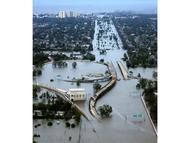
The Energy Collective Group
This group brings together the best thinkers on energy and climate. Join us for smart, insightful posts and conversations about where the energy industry is and where it is going.
Post
“Loss & Damage” - "Separating the fly specks from the pepper."
Originally published here.
“Loss and damage refers to the negative effects of climate change that occur despite mitigation and adaptation efforts.”, UNEP
The UN established the Loss and Damage fund at COP27. The first trickle of funding for the Loss & Damage Fund occurred at COP28. The Loss & Damage Fund represents “the pot of gold at the end of the rainbow” for the wizards of climate attribution and their vaunted (unvalidated and unverified) climate models.
The Loss & Damage Fund is intended to fund the incremental cost of severe weather events resulting from the effects of climate change, not to fund the total costs of severe weather events. Weather events are not new. However, the UN and numerous national governments assert that climate change is making weather events more frequent and more severe. Available data suggests that severe weather event frequency and intensity are either stable or declining slightly globally. That, however, does not mean that some aspects of some specific weather events might not be affected by climate change. For example, it has been suggested that a specific tropical cyclone was stronger, or moved at a different speed, or caused greater rainfall as the result of climate change; or, that a specific drought was more intense or of greater duration.
The challenge for the Loss & Damage Fund is to estimate the percentage of the physical loss and damage caused by a specific severe weather event which is attributable to climate change. Clearly, it is not possible to know the exact impact that climate change had on a specific severe weather event. Therefore, the Fund would be required to rely on attribution studies to estimate the extent of the climate change impact of each severe weather event.
It is not clear that there will be an effort on the part of the Fund to discourage actions which would increase the potential loss and damage from a severe weather event, such as construction of new infrastructure in areas prone to loss and damage from severe weather events, such as coastal regions exposed to the risk of tropical cyclones or flood plains.
There is currently no evidence that climate change has affected the loss or damage resulting from severe weather events, though that is frequently asserted by UN officials and the heads of governments of nations which have experienced significant losses. It is frequently asserted that the growing magnitude of financial losses from severe weather events is proof of the effects of climate change. However, when these financial losses are normalized based on Gross Domestic Product, there does not appear to be any trend of increased losses.
There would almost certainly be an effort on the part of affected nations to maximize the effects attributed to climate change by the attribution studies. It appears likely that the UN would be disposed to be generous in the attribution process, since it is already generous in attributing severe weather loss and damage to climate change. The wizards of climate attribution would be hard pressed to perform the role of “honest broker” under these conditions.
Discussions
No discussions yet. Start a discussion below.
Get Published - Build a Following
The Energy Central Power Industry Network® is based on one core idea - power industry professionals helping each other and advancing the industry by sharing and learning from each other.
If you have an experience or insight to share or have learned something from a conference or seminar, your peers and colleagues on Energy Central want to hear about it. It's also easy to share a link to an article you've liked or an industry resource that you think would be helpful.
























Sign in to Participate